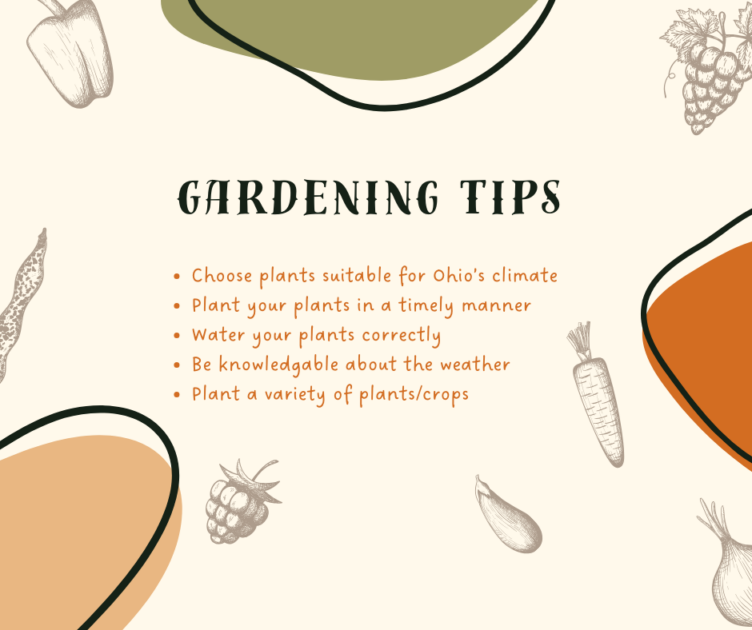April is National Garden Month and is dedicated to celebrating the art of gardening and horticulture, as well as spreading awareness about the best gardening practices.
What began as National Garden Week in 1986 became a month-long celebration in 2002 through the hard work and advocacy of the National Garden Bureau and the National Gardening Association.
The National Garden Bureau shared a powerful statement about the celebration saying that “all gardeners know the innumerable benefits that gardening brings to people and their communities, and this is a month where we can spread that message to those who aren’t directly involved.”
With that in mind, here is a guide to gardening in the state of Ohio for those who are interested in developing a green thumb, and even those who may just need to brush up on their gardening skills.

The first thing to know about gardening in Ohio is the optimal growing season. According to the National Gardening Association, “On average, the frost-free growing season starts April 26 and ends October 13.”
It is also essential to know that Ohio has a difficult climate for gardening, since the state is known for harsh, cold winters and warm, humid summers.
A useful tool in determining what to plant in a garden is the Plant Hardiness Zone Map.
The Plant Hardiness Zone Map, created by the U.S. Department of Agriculture (USDA), is the “standard by which gardeners and growers can determine which perennial plants are most likely to thrive at a location” and is based on average annual extreme minimum winter temperature.
According to the map (updated as of 2023 by the USDA), Ohio actually has four zones: 5b, 6a, 6b and 7a. This means Ohio experiences annual extreme minimum winter temperatures ranging from 0 to -15 degrees Fahrenheit.
There are a number of crops that can survive in a vegetable garden throughout Ohio’s winter. Crops of this sort include beets, cabbage, carrots, cauliflower, lettuce, onions, parsley, parsnips, peas, radishes, spinach and turnips.
Beans, cucumbers, pumpkins, squash, tomatoes and peppers, are also good options, but these plants typically only survive when the soil temperatures are between 50 and 75 degrees Fahrenheit. They will not survive the winter, but make for good summer garden options if year-round gardening is not a priority.
As for fruit, Ohio has a relatively favorable climate for many varieties of fruit plants. This includes apples, peaches, nectarines, apricots, cherries, plums, strawberries, blueberries, blackberries and raspberries.
When looking to plant a flower garden as opposed to fruit and vegetables, flower species such as poppies, hostas, delphiniums, blanket flowers, daylilies, perennials, snapdragons, pansies and violas all fend well with Ohio’s climate.
Another popular type of garden is an herb garden. Fresh herbs are a great addition to cooking but can be expensive in store, however, herbs are incredibly easy to grow and the Ohio climate is suitable for quite a few types of herbs. Thyme, sage, tarragon, oregano, rosemary, basil, lavender and mint are all great additions to an herb garden in the midwest.
A major benefit of herb gardens is they can be started indoors and transplanted to a larger, outdoor container once the weather is suitable.
With these tips and tricks, it is time to plant a successful garden with a variety of fruits, vegetables, flowers and herbs in the state of Ohio to celebrate National Garden Month. A green thumb has never been more achievable.


